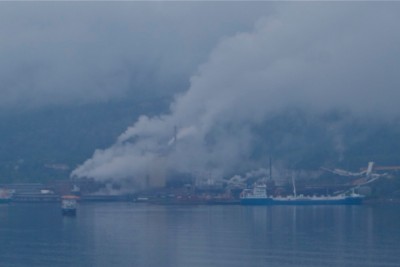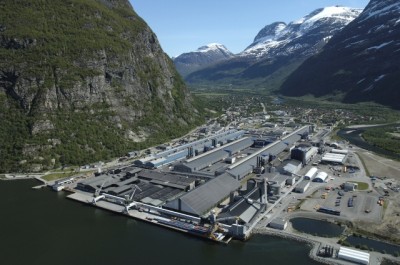Norway bills itself as an environmentally friendly nation, but its own greenhouse gas emissions rose nearly 5 percent last year. The 53.7 million tons of CO2 equivalents unleashed by Norway into the atmosphere amounted to the highest level since emissions first started being calculated in 1973.

The new figures from state statistics bureau SSB (Statistics Norway) are disappointing for both the country’s left-center government, which promotes an environmental profile, and environmental groups that long have been clamouring for Norwegian leaders to force more cuts at home. For years, Norway has been trying to buy its way out of internationally agreed emissions cuts by donating millions to preservation of rain forests and other measures to help halt climate change elsewhere in the world.
That’s because Norway’s own oil and gas industry leaves it with huge emissions at home, especially in relation to Norway’s population. Norway has stated ambitious goals for cutting its emissions, but seems unlikely to meet them as SSB confirmed that most of Norway’s emissions come from oil and gas extraction (13.8 million tons) and its manufacturing and mining industries (11.9 million tons).

Both rose last year. Oil and gas emissions alone rose 0.8 percent from 2009 and were nearly 78 percent over levels in 1990. While manufacturing and mining industry emissions have declined 37.4 percent since 1990, they also rose last year, by 5.4 percent.
SSB’s total figures, estimated in cooperation with Norges Klima- og forurensningsdirektoratet (Klif, Norway’s Climate and Pollution Agency), were perhaps most disappointing because they followed two years in a row of decline in emissions from Norway. The rise was mostly blamed on higher metal production and more transport as demand grew after the declines in 2008 and 2009 set off by the global finance crisis. SSB also noted that an unusually cold winter led to an increase in emissions from heating sources.
Emissions from road traffic, meanwhile, were up 3.5 percent from 2009, to 10.1 million tons of greenhouse gases. That’s up 30.3 percent from 1990 and was sparking more calls Wednesday for additional measures to get Norwegians to drive less. They already pay among the highest fuel taxes in the world, plus road tolls and heavy taxes on automobiles, but punitive taxes on various aspects of driving may now go higher.
‘Very challenging’
The Organisation for Economic Cooperation and Development (OECD) recommended earlier this week that Norwegian politicians should further boost taxes and fees on fuel and slap motorists with more tolls, even though Norwegians currently pay around NOK 14 per liter (the equivalent of USD 11 a gallon) for gasoline.
The OECD admitted it would be very challenging for Norway to reach its goals on emissions cuts at home, but urged Norwegians to drive and travel less. Newspaper Aftenposten reported that research suggests gasoline would have to be priced at NOK 25 per liter (USD 19 per gallon) in order to get Norwegians to reduce their driving, while Norwegians seem reluctant to drop their holiday trips. There’s been a big increase in airline travel, in line with that worldwide.
Erik Solheim, Norway’s environmental minister from the Socialist Left party (SV), was quick on Wednesday to promise more “climate measures” aimed at helping Norway meet its own goals for emission cuts. “It’s no easy job,” he told news bureau NTB. “We are working intensely with new proposals that will be unveiled in the autumn.” He hinted at “more environmentally friendly car technology,” more use of public transport and creation of a “climate fund” with money earmarked for emissions cut measures.
The government also has expressed its regret that its much-hyped carbon capture project at Statoil’s Mongstad plant has been delayed repeatedly. SSB made a note of “high activity” at the Karstø gas power plant and the opening of Mongstad without carbon capture.
Views and News from Norway/Nina Berglund
Join our Readers’ Forum or comment below.
To support our news service, please click the “Donate” button now.

